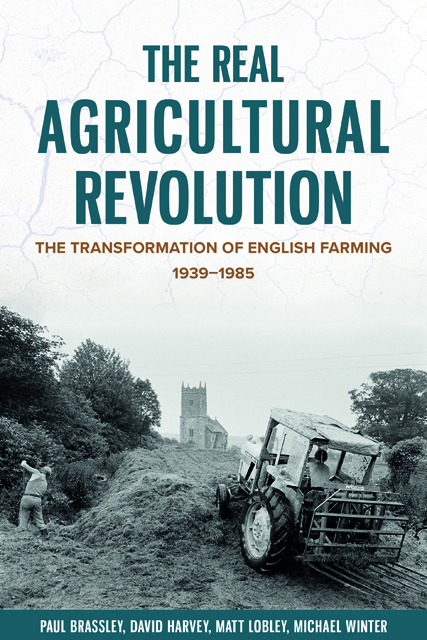Book contents
- Frontmatter
- Contents
- Figures and Tables
- Preface and Acknowledgements
- Abbreviations
- 1 Introduction: Exploring Agricultural Change
- 2 The Organisation of Agricultural Science, 1935–85
- 3 Knowledge Networks in UK Farming, 1935–85
- 4 Agricultural Policy, 1939–85
- 5 Dairy Farming
- 6 Land and Capital
- 7 Labour and Machinery
- 8 Specialisation and Expansion
- 9 The Declining Enterprises: Pigs and Poultry
- 10 Conclusions
- Bibliography
- Index
10 - Conclusions
Published online by Cambridge University Press: 04 January 2024
- Frontmatter
- Contents
- Figures and Tables
- Preface and Acknowledgements
- Abbreviations
- 1 Introduction: Exploring Agricultural Change
- 2 The Organisation of Agricultural Science, 1935–85
- 3 Knowledge Networks in UK Farming, 1935–85
- 4 Agricultural Policy, 1939–85
- 5 Dairy Farming
- 6 Land and Capital
- 7 Labour and Machinery
- 8 Specialisation and Expansion
- 9 The Declining Enterprises: Pigs and Poultry
- 10 Conclusions
- Bibliography
- Index
Summary
The first four chapters of this book demonstrate that new technologies became available between the mid-1930s and the mid-1980s and that their production and adoption were encouraged by government policy; the remaining chapters explain why their adoption took time. Before attempting to draw more general conclusions, it is worth summarising the story as told so far.
Summarising Agricultural Change 1939–85
Chapter 2 examined research and development in agriculture. Much of this was funded directly by government through the ARC or indirectly by its support for university-based researchers. As this chapter demonstrates, the funding was not given uncritically or unthinkingly. Throughout these fifty years, to a greater or lesser extent, government ministers and civil servants, as well as others outside the direct policy-forming network, questioned the amount of money going into agricultural research and the purposes to which it was put. Despite this questioning, funding for agricultural research was maintained, at least into the 1970s. The kind of research that was funded was constantly under tension. In general, scientists argued that it was best to carry out fundamental research to explain how plants and animals worked, at a molecular or cellular level if necessary. Knowledge of this sort, they felt, could then be applied to practical problems. Research funders and farmers, on the other hand, were often more interested in finding immediate answers to current problems. It was not a dilemma that was confined to this period or this country. As Jonathan Harwood has pointed out, academics in German agricultural colleges in the late nineteenth and early twentieth centuries often felt that the way to increase their professional standing was to engage in more academic research at the expense of an immediately practical focus. Nevertheless, the scientists could certainly cite several examples of fundamental research being transmuted with reasonable rapidity into practical application. The work on the biochemistry and physiology of ruminant digestion carried out at the Hannah Dairy Research Institute and the Rowett Research Institute in the late 1950s and early 1960s, for example, led to a reformulation of feeding standards for cattle and sheep by the late 1960s. Studies of spermatogenesis at Cambridge led not only to improved methods of artificial insemination in cattle but also to the application of AI to pigs, and ultimately to work on embryo transfer, cloning of animals, and in vitro fertilisation for humans.
- Type
- Chapter
- Information
- The Real Agricultural RevolutionThe Transformation of English Farming, 1939-1985, pp. 244 - 263Publisher: Boydell & BrewerPrint publication year: 2021



